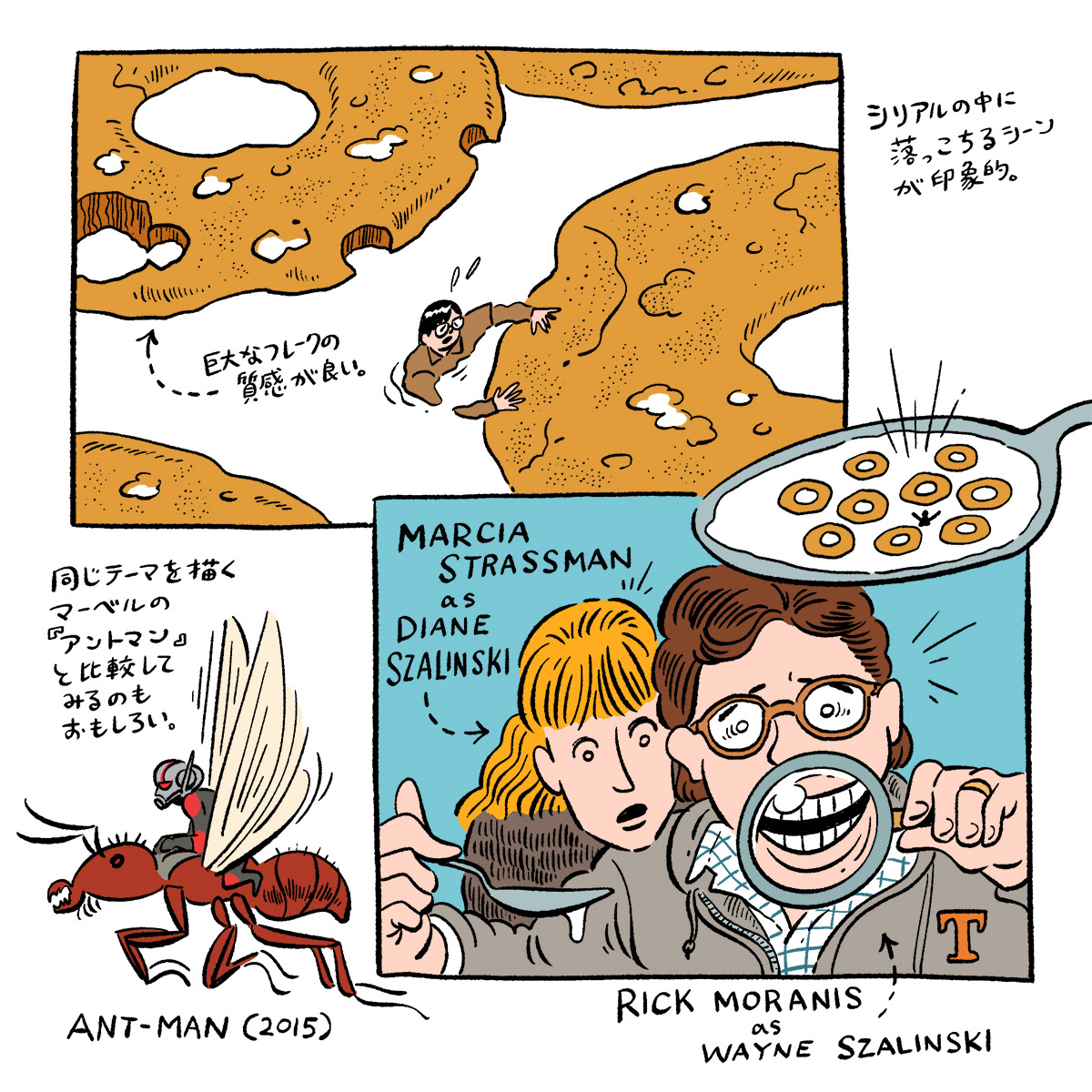"Micro Kids" and "Ant-Man"

As mentioned above, the micro world is created by a large set, but the fact that each lawn is the size of a large tree also conveys how small the children have become. come. This is obvious from the size of the ant, which even shows the prickly hair on its head. Furthermore, along the way, they find a Lego block that Nick threw into the garden, and the group ends up camping inside the tube on the back side of the block (the hole where the convex surface of the front side is inserted when the blocks are stacked and joined together). If you touch blocks on a daily basis, you'll know that the amount of time you can sleep inside this tube is quite small. He is very good at expressing the degree of reduction in comparison with other things, and it is fun to see a set where everything has become huge and it feels like an attraction as it is. When Nick is finally discovered by Wayne, he falls into the cereal his father was trying to eat, and the texture of the giant flakes floating in the milk lake is also a nice touch.
By the way, many people may have recently seen the image of an adventurer riding on the back of an ant. In the Marvel Cinematic Universe movie " Ant-Man ," Ant-Man, a hero who has acquired material-reducing technology, becomes large enough to jump on the back of an ant and fights evil, but he also uses universal everyday objects and toys. The ``reduction art'' in comparison with ``Micro Kids'' gives the impression that it is an upgraded version of ``Micro Kids''. ``Micro Kids'' depicts the micro world in such an interesting way using an analog set, so if it was done with today's video technology, it would probably be as powerful as ``Ant-Man.'' The problem may be how to differentiate it from Ant-Man.
In fact, plans to make a movie of "Ant-Man" have been in the works since the 1980s, but it seems that the plan fell through because Disney was working on "Honey, We Don't Know" with a similar theme at the time. Time has passed, and now that "Ant-Man" has been made into a movie under Disney's umbrella, it feels like a coincidence. Furthermore, Johnston directed the first Captain America solo film, " Captain America: The First Avenger, " at Marvel, so perhaps he, who made his directorial debut with "Honey, We Don't Know," could have taken the megaphone for "Ant-Man." As a World War II adventure, Johnston's " The Rocketeer " can be called the prototype for the later "The First Avenger," but "Honey, We Don't Know" and "Ant-Man" should have been lined up in the same way.
Ant-Man can control his size at will, but the movie also depicts the fear that if he shrinks down to the molecular level, he risks becoming trapped in the quantum world. By continuing to shrink forever, they enter an almost different dimension, separated from time and space, and when you think about this, the adventures of Micro Kids become even more frightening. ``Micro Kids'' was inspired by ` `The Shrinking Man ,'' directed by Jack Arnold, who is also known for ``The Great Amazon.'' The story depicts the tragic fate of a man who leaves. The protagonist eventually grows to a size that no one can find, but at the same time he reaches a certain state of mind and accepts his fate of being reduced to the size of an atom. It doesn't just get smaller. The concept of space becomes ambiguous, and the mysterious state in which people are supposed to be there but barely there at all is similar to the quantum world of Ant-Man. Microscopic things are profound, combining thrilling adventures and mysterious unknown worlds.

![A small adventure of "Micro Kids" [Mizumaru Kawahara's CINEMONOLOGUE Vol.42]](https://cinemore.jp/images/c346fae00a13e767a7ba3f00a799e6eaa4d745f893b9053eb5f8b4addd3c8f9d.jpg)
